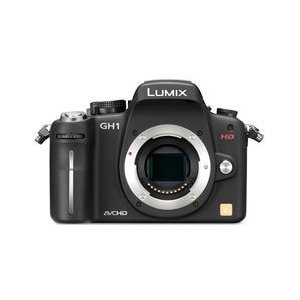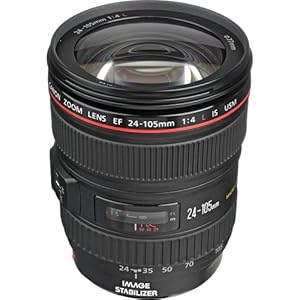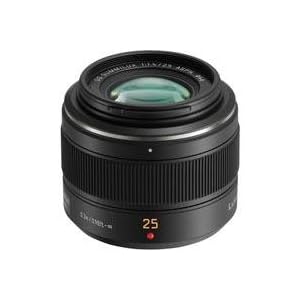 The Nikon D4 is the first to do something that no other HDSLR has done, added a headphone jack. This is in a large, heavy, expensive camera body, but it is a step in the right direction. Also including is a clean HDMI monitoring which is very big for those who want to record to an external recorder like the Atomos Ninja. Hopefully the HDMI out includes audio. The Panasonic GH2 was the first with that (but right now only at 60i with no audio).
The Nikon D4 is the first to do something that no other HDSLR has done, added a headphone jack. This is in a large, heavy, expensive camera body, but it is a step in the right direction. Also including is a clean HDMI monitoring which is very big for those who want to record to an external recorder like the Atomos Ninja. Hopefully the HDMI out includes audio. The Panasonic GH2 was the first with that (but right now only at 60i with no audio).
Here is a description of the video capabilities from DPreview:
“The parallel advances made in sensor technology and Internet video distribution have helped create the ability to capture and broadcast video footage. In turn this has put pressure on many professional photographers to capture clips alongside their stills. In addition, the broadcast and movie industries have adopted the 5D Mark II to a degree that appears to have surprised even Canon. As a result, it’s not surprising that the D4 features more advanced, and better integrated, video capabilities than its predecessor. The immediate giveaway should probably be the inclusion not just of a mic input socket by a headphone output for monitoring the results (both of which have adjustable input/output levels).
The D4 can shoot 1080p movies at 30, 25 or 24 frames per second and at up to 24Mbps. The video is compressed using the B-frame compression section of the H.264 standard, which tries to optimize the capture of motion without hugely inflating the file sizes. It also has manually configurable volume control, including a line-level audio option. However, what may prove to be the camera’s biggest feature is the ability to export its uncompressed video footage via its HDMI port. We suspect that this feature, beyond all others, may help endear the camera to the broadcast and movie crowd. Whether using this for recording the camera’s best quality footage or to use an external monitor as viewfinder, it’s a feature we expect to become increasingly common.
A number of small details show how carefully Nikon has listened to the needs of movie shooters, giving the option to start movies either with a record button or with the shutter button (which, in turn, allows video capture to be started with the 10-pin cable release). Photojournalists meanwhile, get to pick whether pressing the shutter interrupt the video capture to take a still or to take a full-frame 3:2 aspect ratio 2.5MP frame grab.
Movies can also be shot at three different crops from the sensor, which Nikon is describing as FX, DX and 2.7X (native 1920×1080). This makes it easy to vary the field-of-view for grabbing footage, even if you’ve got a prime lens mounted. However, the ‘FX’ size is a significantly cropped version of the full sensor (it’s 91% of the sensor’s width), so the field-of-view will be a little narrower than you’d expect for any given focal length. Also the native 1920×1080 video will be higher quality than the FX and DX versions, since it hasn't been downsized. This difference is likely to be incredibly small (almost certainly irrelevant for most users), but is a consideration for high-end video users.
The D4 gains improved aperture control in movie mode, with the addition of ‘Power aperture'. This simply means that the user can adjust the aperture while recording video in the A and M exposure modes. It's also possible to set the aperture much more precisely in video live view mode before recording starts, in 1/8 stop incrementss using the Pv and Fn buttons on the front of the camera. In principle this should allow more exact matching of recording brightness across multiple camera / lens combinations.”
– No mention of how it deals with moiré, ailising and rolling shutter. Also video has to be monitored with the back of camera LCD only because of the optical viewfinder is blocked by the mirror being up. The beast screams for accessories like an external viewfinder. Panasonic, please give the GH3 a headphone jack. –












 I had just bought the JVC HM100 tapeless video camera to replace my Sony V1, but my clients wanted the HDSLR look. With the Redrock the image was soft and hard to get because of all the adjustments. It was a beast and it did not like being handheld. Then came the HDSLR. The Canon 5D markII came out which shot 1080p video and some my associates were buying Canon. I realized that I was behind and that I needed to catch up.
I had just bought the JVC HM100 tapeless video camera to replace my Sony V1, but my clients wanted the HDSLR look. With the Redrock the image was soft and hard to get because of all the adjustments. It was a beast and it did not like being handheld. Then came the HDSLR. The Canon 5D markII came out which shot 1080p video and some my associates were buying Canon. I realized that I was behind and that I needed to catch up. I was interested in the
I was interested in the  After seeing what Canon HDSLR's could do, I sold my Olympus E-System and bought the Canon 7D. The 7D is a mixed blessing. A 35mm motion picture sized sensor instead of 35mm still sized sensor on the 5D. The Canon shot h264 video in Quicktime and could be viewed easily in the finder. There is 1080p at 24 and 30 fps. 720p at 60 fps. All modes are not interlaced and at broadcast friendly frame rates. They are progressive. Great looking video in a small package but only in certain circumstances.
After seeing what Canon HDSLR's could do, I sold my Olympus E-System and bought the Canon 7D. The 7D is a mixed blessing. A 35mm motion picture sized sensor instead of 35mm still sized sensor on the 5D. The Canon shot h264 video in Quicktime and could be viewed easily in the finder. There is 1080p at 24 and 30 fps. 720p at 60 fps. All modes are not interlaced and at broadcast friendly frame rates. They are progressive. Great looking video in a small package but only in certain circumstances. There is moiré and ailising because Canon line skips the CMOS chip because it has much resolution that HD video. There is Rolling Shutter which makes the video look like jello. So I also bought the better “L-Glass” for my Canon because I could afford it now because it was for my video camera. In fact I bought the
There is moiré and ailising because Canon line skips the CMOS chip because it has much resolution that HD video. There is Rolling Shutter which makes the video look like jello. So I also bought the better “L-Glass” for my Canon because I could afford it now because it was for my video camera. In fact I bought the  Then there is audio. There is no headphone jack. The 7D had a pumping auto gain on the audio that could not be overdid, which is not good. The internal mic was mono. Most people used double system audio with a separate audio recorder. This does not fit into my book of simple and small. I found the
Then there is audio. There is no headphone jack. The 7D had a pumping auto gain on the audio that could not be overdid, which is not good. The internal mic was mono. Most people used double system audio with a separate audio recorder. This does not fit into my book of simple and small. I found the  Through out all this time I still had my film Nikon F3‘s even though a lot of others had moved on to autofocus cameras. I shot slides instead of prints and loved my beloved Kodachrome. I loved my Nikons and had used them for over 30 years. As you can see I used the “professional big boys of the business, Sony, Nikon” when it was the best for me. They might had not been the most cost efficient but did turn out to be frugal because of the way I used them.
Through out all this time I still had my film Nikon F3‘s even though a lot of others had moved on to autofocus cameras. I shot slides instead of prints and loved my beloved Kodachrome. I loved my Nikons and had used them for over 30 years. As you can see I used the “professional big boys of the business, Sony, Nikon” when it was the best for me. They might had not been the most cost efficient but did turn out to be frugal because of the way I used them. In 2001 I sold my beloved Nikons for this new thing called a digital still camera. I had already converted to digital with video and was taking stills from my VX1000 video camera. I bought a Sony F707 consumer camera with built in lens instead of a SLR because they were still $3,000. It had a low resolution electronic viewfinder. I really liked the smallness of the camera and instant feedback that digital gave me.
In 2001 I sold my beloved Nikons for this new thing called a digital still camera. I had already converted to digital with video and was taking stills from my VX1000 video camera. I bought a Sony F707 consumer camera with built in lens instead of a SLR because they were still $3,000. It had a low resolution electronic viewfinder. I really liked the smallness of the camera and instant feedback that digital gave me. When the Canon Digital Rebel came out, I got a DSLR. At the time I could not afford “L-Glass”, so I had consumer lenses because still photography was secondary to video. A few years later when going on a vacation trip I need a second still camera so I bought at Costco an Olympus E300. I was immediately impressed with the quality of the lenses and the camera. The jpegs out of the camera looked the best in terms of color quality compared to using any other camera. I was used to shooting slides so I like shooting jpeg and mostly do. I also had an Olympus E1 and then an Olympus E3 and was very happy. I truly loved the swivel LCD on the E3.
When the Canon Digital Rebel came out, I got a DSLR. At the time I could not afford “L-Glass”, so I had consumer lenses because still photography was secondary to video. A few years later when going on a vacation trip I need a second still camera so I bought at Costco an Olympus E300. I was immediately impressed with the quality of the lenses and the camera. The jpegs out of the camera looked the best in terms of color quality compared to using any other camera. I was used to shooting slides so I like shooting jpeg and mostly do. I also had an Olympus E1 and then an Olympus E3 and was very happy. I truly loved the swivel LCD on the E3. Now that I have a
Now that I have a 
